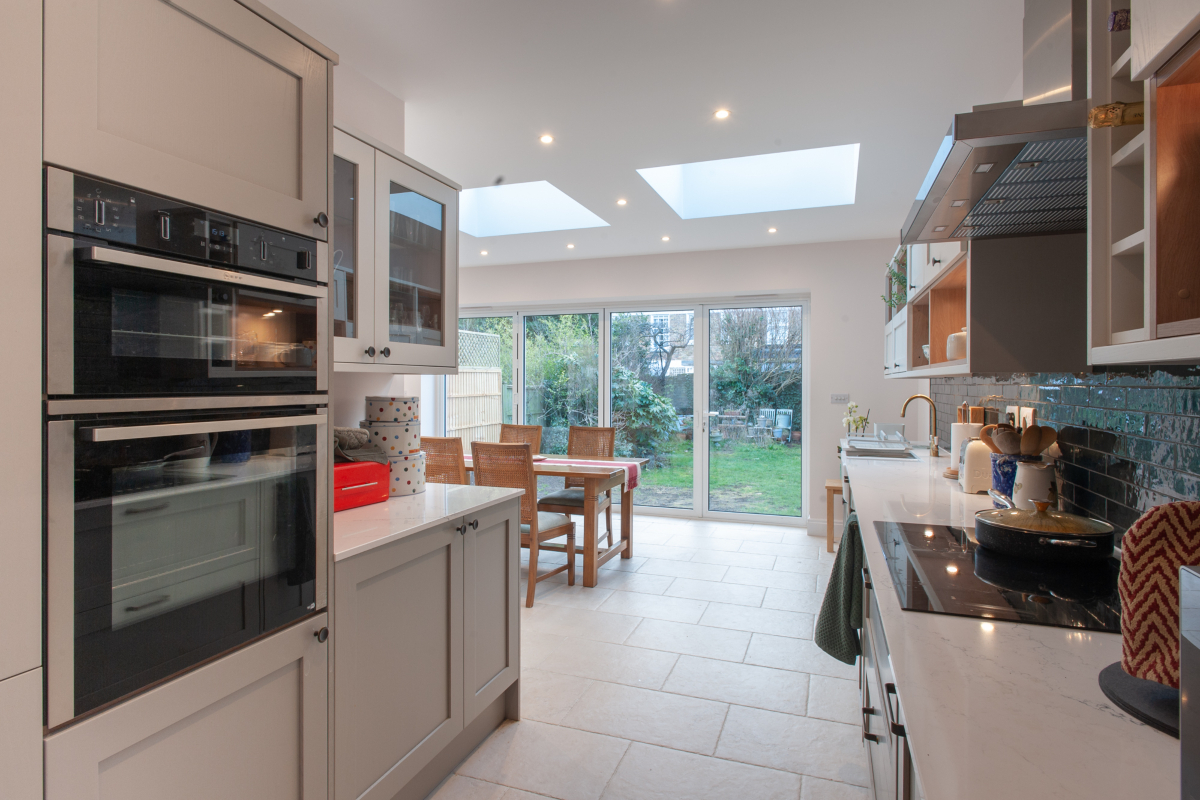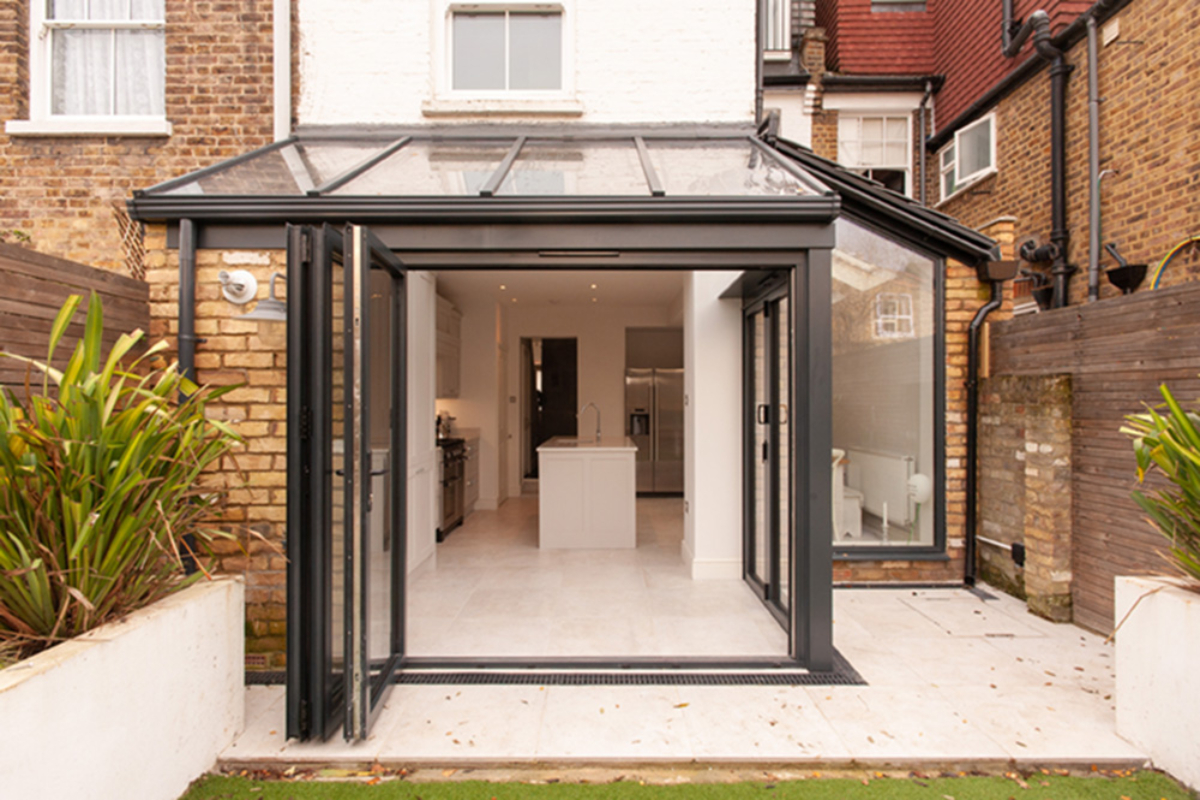Most homeowners crave more space. At the same time, most homeowners have no desire to move houses. The solution? A home extension.
Home extensions provide property owners with the opportunity to increase their living space while at the same time adding value to their homes. But what if a traditional extension is too costly or complex to consider? This is where flat pack extensions come in.
Flat pack extensions are the cheaper, hassle-free alternative to traditional home extensions. Essentially, an extension hack.
If you are a homeowner and quick, cost-effective space solutions sound appealing to you, then read on to find out everything you need to know about flat pack extensions.
What exactly is a flat pack extension?
Flat pack extensions, or prefabricated extensions, are extensions that are built ex-situ or off-site in a factory or workshop, and then transported to the property to be assembled and joined to the original house.
Simply put, it is the equivalent of ordering out for a meal. The food is delivered to your home, cooked per your specifications, in a timely manner, and is delicious. The only thing left to do is remove your plates and serve.
What are the benefits of flat pack extensions?
Though a fairly new concept, flat pack extensions are quickly catching on and it is easy to see why. Flat pack extensions have some obvious benefits over regular home extensions.
Primarily, these extensions can be done at a fraction of the cost and time of regular home extensions. This means that prefab extensions are the faster and budget-friendly answers to space issues.
And since the extension is built off-site, there is minimal disruption to property owners during the extension process. This is in stark contrast to the commotion and disturbance caused by on-site extensions.
What are the different types of flat pack extensions?
Flat pack extension types can be as varied as regular extensions with very few exceptions.
Prefab extensions tend to favour rear-style extensions compared to side return or multi-storey extension styles. However, every extension style can be customised and designed to suit almost any room requirement.
An important aspect of prefabricated extensions is the materials used for its build. The materials used for the flat pack extensions can affect its design, cost, and even the need for planning permission.
Some common materials that can be used for prefab extensions include:
- Timber
- Steel
- Brick
- uPVC
Each material has its unique advantages and disadvantages based on its quality, durability, and cost. If the material used differs from that in the original house, then a movement gap has to be integrated in order to compensate for the different rates of expansion and contraction.
What factors should you consider when choosing a flat pack extension?
As with all home renovations and extensions, the eventual type and style of the prefab extension chosen depends on a number of factors. Some important considerations that property owners must take into account include:
- The space available on the property
- The extra space required
- Building materials used
- The budget
- Groundwork required
Since the options for designing flat pack extensions are as wide-ranging as regular extensions, homeowners can design and create tailor-made extensions suited to their specific requirements.
In addition to and encompassing all the above-mentioned considerations, another factor that could influence the final cost and design of the flat pack extension is planning permission.
Like other extension types, prefab extensions require planning permission for extensions that do not meet the specific size limitations of permitted developments. This includes extensions that are done on properties listed in conservation areas.
Interesting ideas for flat pack extensions
Flat pack extensions open up many opportunities to create tailormade rooms befitting specific requirements. They are also great for adding design elements unique to each homeowner.
One of the most commonly designed prefabricated extension is the kitchen extension. These are incredibly popular because of the value a well-constructed kitchen extension adds to the property (up to 25%)!
Kitchen extensions are also highly sought-after as they help convert tiny, dark kitchen diners into bright, warm and inviting spaces complete with the latest fittings and fixtures required in modern homes.
Conservatories are another highly-requested extension style for flat pack extensions. These brighten up a home considerably and the added living space allows property owners to utilise it for numerous purposes.
Another ideal option is the creation of a garden room. Garden rooms and prefab extensions are the perfect pair as they both offer quick and easy solutions to most space deficits. Not only that, garden rooms are incredibly versatile and can be designed to suit almost any need. From well-equipped office pods and guest rooms, to minimalist playrooms and storage areas.
Though it seems improbable, loft conversions too are a viable option. Custom-built lofts can be transported to and installed into the existing house in just a few weeks’ time!
No matter the extension design chosen, the mechanics must be carefully considered.
For instance, kitchen and bathroom extensions require connections to drainage and plumbing in addition to the foundation and utilities. Glazing and insulation also need to be taken into account as they could significantly affect energy bills.
Why should you hire a professional to design and build the perfect prefabricated extension?
With prefabricated extensions viewed as easy-to-manage projects, it is tempting for many homeowners to take up the installation themselves. But that may be a costly mistake.
For a flat pack extension to add value to a property, it must be designed, built, and installed with considerable skill and workmanship. If not, the ensuing damage would be expensive to repair.
Extension specialists are worth hiring because the value they bring to a project far outweighs their cost. This is because most home extension builders offer complete and comprehensive project management for the entire process.
This includes:
- Surveying the location
- Carefully designing the proposed extension
- Applying for and securing the requisite planning permission and building regulations approval
- Contractual work
- Daily on-site project management
- Foundational work
- Installation
This ensures that every aspect of the design and build complies with planning guidelines and regulations thereby creating an extension of high quality.
An effective way of achieving this is by hiring reputed professionals who have the expertise and experience to deliver exceptional extensions worthy of the investment.
Conclusion
Flat pack extensions are no longer seen as a revolutionary concept. They are in fact the modern solutions to a universal problem.
With moving costs, stamp duties, and legal fees, extensions are often the best answer to increase the living space within a property. But too often, even these become costly and can cause considerable disruption or even relocation.
Flat pack extensions combat all these issues by providing fast, cost-effective extensions that not only add space and value to your home, but which can also be customised to your specifications.
If you are a homeowner who requires additional living space, and favours quick, cost-effective results, then a flat pack extension might be right for you.
And to design and create bespoke flat pack extensions of the highest standards, contact the incredible team at Good Design and Build. We take pride in creating the finest home extensions that allow you to enjoy the many benefits of flat pack extensions and to experience a truly hassle-free extension process.




